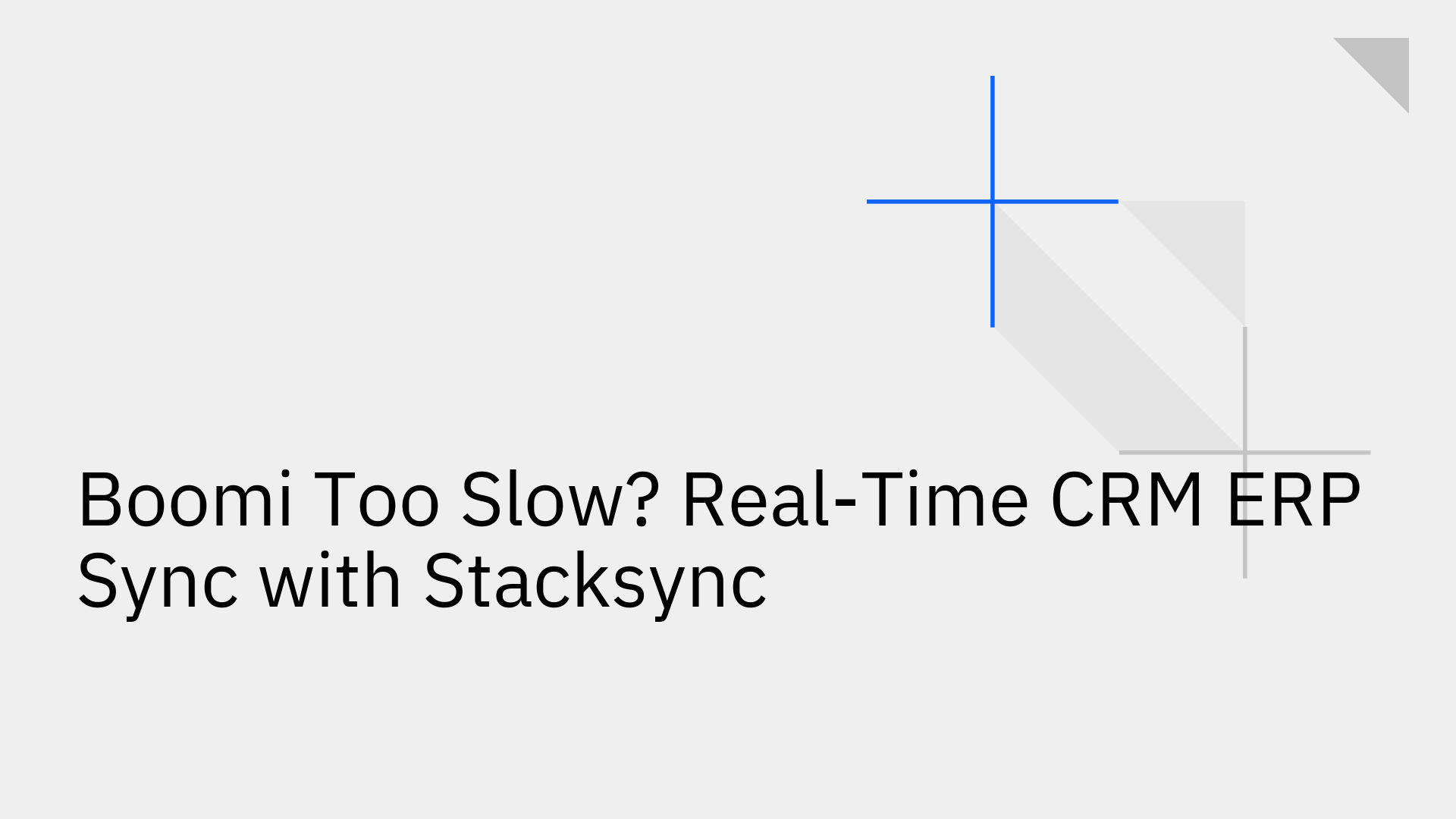
Is your business struggling with slow data synchronization between critical CRM and ERP systems? In today's market, real-time data is not a luxury but a necessity for sales, finance, and customer service alignment. When information lags, operations falter. Traditional integration platforms like Dell Boomi, while powerful, often fail to deliver the true real-time speed required for modern business, creating operational bottlenecks.
This article explores why a Boomi integration can be too slow for CRM ERP sync and presents Stacksync as a purpose-built, real-time alternative designed to eliminate these delays.
Seamless data flow between your Customer Relationship Management (CRM) and Enterprise Resource Planning (ERP) systems is foundational to an efficient operation. This integration unifies data across departments, creating a single source of truth for customer and financial records [1]. However, when data delays (latency) occur, the business impact is significant:
Our comprehensive ERP Integration Guide offers foundational knowledge on the importance of streamlining these critical operations.
While Boomi is a versatile general-purpose Integration Platform as a Service (iPaaS), its architecture is not optimized for the instant, operational synchronization that modern businesses demand. This is precisely why a Boomi integration can feel too slow for CRM ERP sync.
Boomi primarily uses scheduled triggers and polling mechanisms to check for data changes. This means synchronizations only occur at set intervals, such as every 5, 15, or 60 minutes. This method inherently creates a time lag. For many modern business processes, waiting minutes for critical data to sync is simply too long. To overcome these architectural limitations, many organizations now seek to replace Boomi with solutions that eliminate latency trade-offs.
Achieving a true two-way sync in Boomi is not an out-of-the-box feature; it requires complex, custom development. This custom work often leads to brittle integrations that are difficult to maintain and scale, increasing the total cost of ownership and requiring specialized developers. These are common integration challenges that add unnecessary overhead [3]. As our comparison of MuleSoft, Boomi, Workato vs. Stacksync highlights, general-purpose iPaaS solutions often introduce latency and complexity for what should be a straightforward sync.
Stacksync is a purpose-built platform designed specifically for real-time, bi-directional data synchronization. It provides a modern solution to the legacy challenges posed by platforms like Boomi, ensuring your data is always current and accurate.
Stacksync uses an event-driven architecture that captures and syncs data changes at the database level the moment they occur. This key differentiator results in sub-second latency, making data propagation across systems practically instantaneous. Our performance benchmarks in the ETL Shootout 2025 demonstrate this superior speed compared to traditional integration methods.
With Stacksync, true bi-directional synchronization is a native, out-of-the-box feature that eliminates the need for complex custom logic. Our platform automatically ensures data consistency between your CRM and ERP with features like field-level change detection and a conflict resolution engine that maintains a single source of truth. See how we stand against the competition in our comparison of real-time bidirectional CRM sync platforms.
The table below summarizes the core differences for CRM-ERP integration.
For a more detailed analysis of how we compare against other iPaaS giants, see our breakdown of Stacksync vs. MuleSoft, Boomi, and Workato.
While Boomi is a capable tool for many automation tasks, its architecture makes it too slow for mission-critical, real-time CRM and ERP synchronization. The resulting data latency creates tangible business problems, from lost sales to operational chaos.
Stacksync is the superior choice for enterprises that cannot afford to wait for their data. By ensuring instant and reliable data flow, Stacksync helps you realize the full benefits of effective integration [4].
If your business is hampered by slow integration, it’s time to explore a modern, real-time solution. Book a demo with a Stacksync integration expert to see how effortless real-time CRM-ERP synchronization can be.